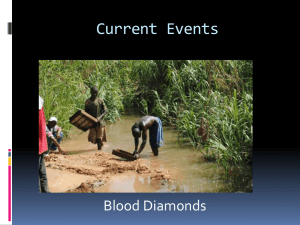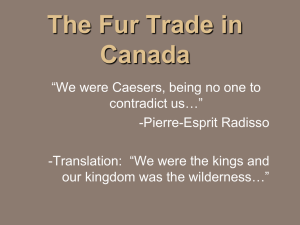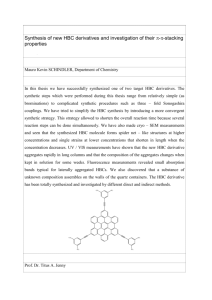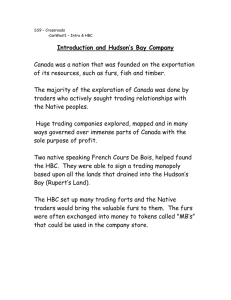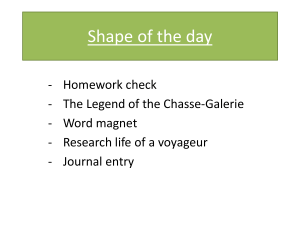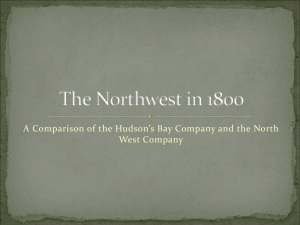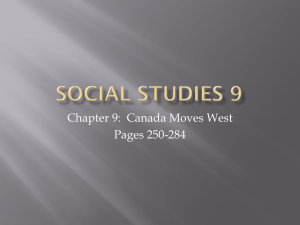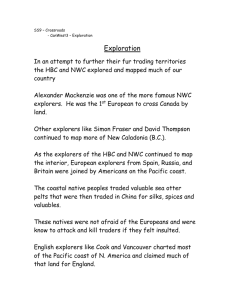horizonschpt4(1)
advertisement
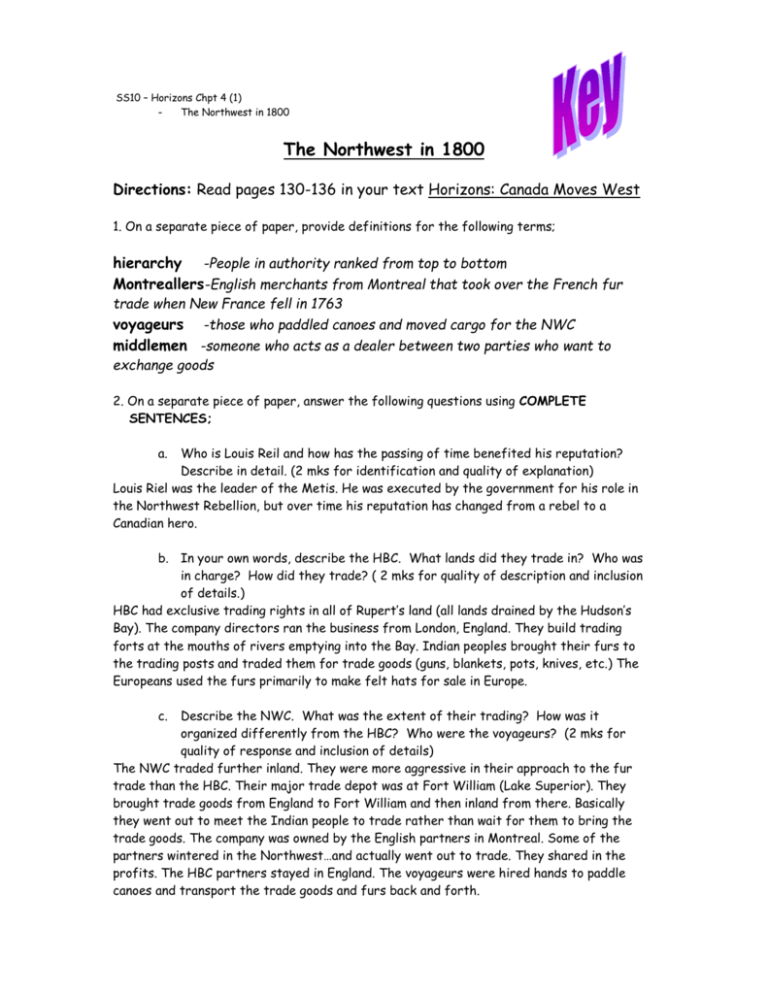
SS10 – Horizons Chpt 4 (1) - The Northwest in 1800 The Northwest in 1800 Directions: Read pages 130-136 in your text Horizons: Canada Moves West 1. On a separate piece of paper, provide definitions for the following terms; hierarchy -People in authority ranked from top to bottom Montreallers-English merchants from Montreal that took over the French fur trade when New France fell in 1763 voyageurs -those who paddled canoes and moved cargo for the NWC middlemen -someone who acts as a dealer between two parties who want to exchange goods 2. On a separate piece of paper, answer the following questions using COMPLETE SENTENCES; a. Who is Louis Reil and how has the passing of time benefited his reputation? Describe in detail. (2 mks for identification and quality of explanation) Louis Riel was the leader of the Metis. He was executed by the government for his role in the Northwest Rebellion, but over time his reputation has changed from a rebel to a Canadian hero. b. In your own words, describe the HBC. What lands did they trade in? Who was in charge? How did they trade? ( 2 mks for quality of description and inclusion of details.) HBC had exclusive trading rights in all of Rupert’s land (all lands drained by the Hudson’s Bay). The company directors ran the business from London, England. They build trading forts at the mouths of rivers emptying into the Bay. Indian peoples brought their furs to the trading posts and traded them for trade goods (guns, blankets, pots, knives, etc.) The Europeans used the furs primarily to make felt hats for sale in Europe. c. Describe the NWC. What was the extent of their trading? How was it organized differently from the HBC? Who were the voyageurs? (2 mks for quality of response and inclusion of details) The NWC traded further inland. They were more aggressive in their approach to the fur trade than the HBC. Their major trade depot was at Fort William (Lake Superior). They brought trade goods from England to Fort William and then inland from there. Basically they went out to meet the Indian people to trade rather than wait for them to bring the trade goods. The company was owned by the English partners in Montreal. Some of the partners wintered in the Northwest…and actually went out to trade. They shared in the profits. The HBC partners stayed in England. The voyageurs were hired hands to paddle canoes and transport the trade goods and furs back and forth. d. How did the fur trade affect and change the way the native peoples of Canada lived their life? Give examples to back up your response. (2 mks for description and example) -It disrupted their lives. Some went into trapping full-time and abandoned their usual yearly cycles of fishing, hunting, preserving food. -It caused a clash of cultural values. They usually worked to sustain themselves, but since the fur trade, they clashed with the European “work for works sake” way of life. -Europeans exposed the Natives to diseases. Smallpox and Measles were the two most deadly. 3. Using the blank outline provided: Combine the two maps found on page 131 and 133 of your text, to compare the two trading areas and routes of the HBC and the NWC. Use different colors to represent the different company routes and different company trading posts. You will receive 10 marks for the quality of effort put into your map. Total: ____/ 22

